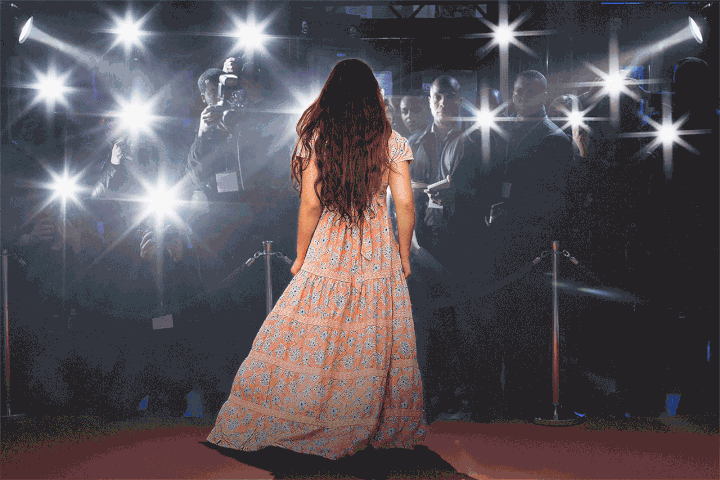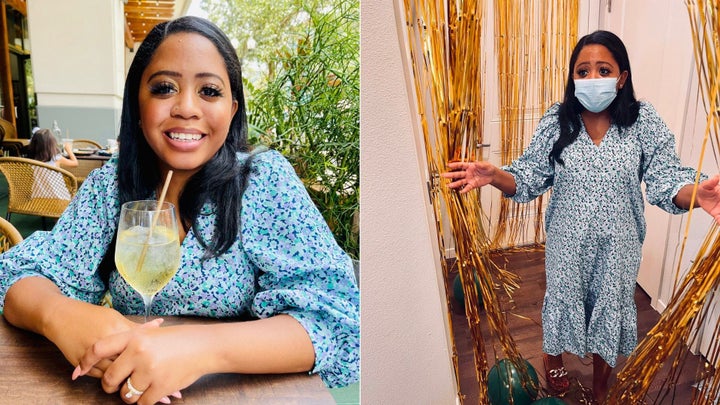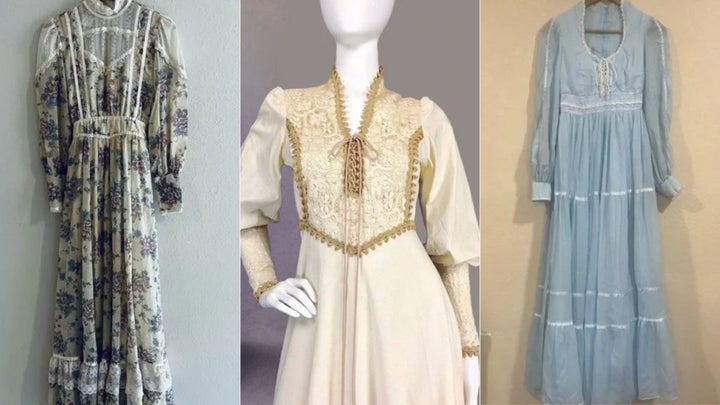
The prairie dress. The nap dress. The milkmaid dress.
Call them what you want, but one thing is undeniable: For the past four years, the quaint, Laura Ashley-throwback prairie dress ― with its ruffled hem, fluttered sleeves and modest ankle length ― has had a mighty tight grip on consumer fashion.
Robin Givhan, The Washington Post’s senior critic at large, first wrote about the dresses appearing on runways in 2018, categorising them as part of the “ugly” fashion trend. (Think bulky sneakers and bum bags.) More recently, they’ve been grouped in as part of the cottagecore aesthetic, a trend in design and fashion all about romanticising simpler times and pastoral living.
The prairie dress is the trend that just won’t die, bless her “Little House on the Prairie” heart.
If you go shopping today, though, it’s not like you have many options beside it.
“There are two styles available for women right now and they are milkmaid and 90s rave slut,” writer Marisa Kabas joked on Twitter of the current sartorial gulf.
When it comes to the former, not everyone’s a fan. According to Twitter, prairie dresses are “shapeless,” “dowdy” and very Laura Ingalls Wilder-esque, if not venturing into “The Handmaid’s Tale.”
Others love them.
“Granted my prairie dress is a tits-out prairie dress but I still love it and look hot in it and I will never go back to American Apparel bodycon hell ever again,” one Twitter user joked.
Shauntelle Stevenson Carnegie, a corporate events manager from New York City, is firmly Team Milkmaid Dress, mostly because it’s so versatile.
“I have four, and I wear them to church, to work and for my favourite activity, brunch,” she told HuffPost.
As for the criticism, Stevenson Carnegie scoffs at those doing the scoffing. (And she’s comfy in her prairie dress as she does so.)
“Someone must’ve said that the style is ugly or unflattering, and people latched onto that. But the style sells out for a reason,” she said. “I think people hate the style because it seems shapeless. But once I put it on and realised it had pockets, I never looked back.”
Plus, Stevenson Carnegie said, the silhouette works with her body shape.
“I am a Black woman with hips, thighs and more, and the style looks good on me,” she said.

Some of the popularity is a credit to the Covid-19 pandemic. The dress is structured enough to be worn outside but comfy enough for lounging around the house — not to mention sufficiently roomy for those of us who gained some pandemic weight.
“The pandemic has recast what we expect from clothing,” said Deirdre Clemente, a professor who studies the history of the American fashion industry at the University of Nevada, Las Vegas.
“We expect it to be comfortable, affordable and, most of all, personal,” she told HuffPost. “We expect to express our individuality in our clothing more now than ever before in human history.”
Fashion writer Chloe Iris Kennedy agrees.
“Nowadays, trends are not selling a style as much as they are selling an identity. ‘It’ girl, ‘old money,’ ‘green juice girl’ — these titles are more than just the clothes you wear, but how you present yourself, the media you consume and the actions you prioritise,” said Kennedy, who also coordinates the High Fashion Twitter Met Gala, an unofficial “companion event” to the annual Met Gala fundraiser.
The prairie dress and the more general cottagecore craze are for the “twee nature girl.” The style manages to be both sentimental and current, Clemente said.
“I think women gravitate toward these dresses because it’s a familiar concept, invoking childhood memories of loose-fitting dresses with lace and freedom of movement,” she said.
If you wanted to, you could trace cottagecore all the way back to the 1770s and Marie Antoinette, the historian argued.
For a good time, the ill-fated French queen and her ladies-in-waiting dressed up as milkmaids to do domestic tasks at a replica rural village constructed for her in the shadow of Versailles.
Prairie dress mania isn’t anything new, either.
Fashion lovers, especially in the ’70s and ’80s, have turned to peasant dresses, prairie blouses and lace pinafores to celebrate “simple, uber-feminine clothing more in line with country life than city sophistication,” Clemente said.
Is the prairie dress anti-feminist?
Of course, “you don’t live on a farm!” is not the only critique of the prairie dress.
Since the garb covers up so much skin, some have wondered if the trend is suggestive of a larger conservative sea change or a plot to turn modern women traditional, especially in light of the Roe v. Wade abortion ruling being overturned.
“Suddenly the Target dresses make sense,” one woman tweeted in June, after the Supreme Court news. “They knew before we did.”
Others have joked that the dress makes wearers look like a wife of Warren Jeffs, the leader of a polygamist offshoot of The Church of Jesus Christ of Latter-day Saints.
Then there’s the criticism that because of the dress’s pioneering and homesteading history, it’s racist.
“Women in prairie dresses aren’t dressing like fringe religious groups in a delightfully odd turn of fashion,” Peggy O’Donnell, a historian and lecturer at the University of Chicago, wrote in Jezebel in 2019. ”They’re dressing like their own great-great-grandmothers, in a claim, conscious or not, to a racialised and gendered history.”
Of course, there are pro-prairie dress hot takes all over the internet, too.
If anything, some say, the dress should be reclaimed as a symbol of women’s liberation, or at least their liberation from the “male gaze.” (Unless your prairie dress has a boob window or a deep V neckline, it won’t likely be seen as sexy.)
“I feel like you can put on a prairie dress instead of wearing a ‘Future is Female’ T-shirt,” costume designer Terese Wadden told The Daily Beast in 2018.
The argument could also be made that the last time the prairie dress had a run this long was back in the the 1970s, when the Roe decision conferred a right to abortion.
Wearers of prairie dresses say it really isn’t that deep. Reja Tahir, a tech worker, told HuffPost that she simply loves a good housedress and thinks “The Handmaid’s Tale” comparisons are a bit of a reach.
“I think it’s a tired liberal approach toward feminism that automatically conflates covering skin with oppression,” she said. “The narrative also hurts sections of communities like Muslim women who have painstakingly been arguing that covering is their choice and not forced upon them.”

“For me, I love the fact that the dresses invoke connections with nature, a yearning that most urbanised people have,” Tahir said. “It’s more about feeling like you’re frolicking in the woods than oppression.”
Though she understands people’s distaste for the look, Kennedy, the fashion writer, doesn’t see oppression in the prairie dress, either.
“Oppression does not come from what a garment looks like, but rather taking away all options to look like anything else,” she said. “I think directly associating modest fashion with oppression is a very Western perspective and misunderstanding of this trend.”
Clemente, the historian, can understand all sides.
“In light of current events restricting women’s choices over their bodies, I can see why celebrating an outdated notion of femininity would irk some,” she said. “But I would lean more toward seeing women’s desires to revisit and reconsider established and institutionalised ideas of femininity than a turn towards political conservatism.”
Plus, you’re not locked into being the milkmaid every day just because you dressed like that once. “You can wear the safety-pinned jean jacket tomorrow if you want,” Clemente said.
But if you still can’t stand the prairie dress, take heart: People will eventually put it back in their drawers, and prairie course discourse will come to an end.
“I do think the style will run its course in popularity,” Clemente said. “It will still be worn by those who love the look, but it will soon go back into the revolving closet of fashion trends ― only to be pulled out again in a decade or so.”